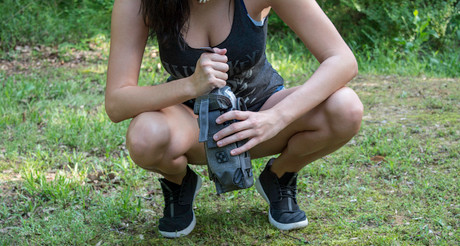How to Roll Your Own Kit
Oct 23rd 2017
As I'm sure you know by now, our company builds med kits. Damned good ones, too. They’re not the least expensive out there, but they’re not the most expensive, either. If you do your research you’ll find that out. We have kits of varying sizes and prices so that we can fit into pretty much anyone’s budget. That said, there are many solid companies out there who build good, solid med kits and there are also some kits that are less than stellar. Caveat emptor. But, we understand that many, if not most, of us are on tight budgets and we will be the first to let folks know, “roll your own” if you can’t afford a commercially available one. If you choose to do that, good on you, but there are a few considerations as to how you’ll want to build it.
- Cost
- Size
- “Mission Requirements”
Cost is always a driving factor because, let’s face it, medical equipment isn’t cheap and if it is cheap, watch out because it can be counterfeit or stolen or about as useless as saddlebags on a pig. I don’t trust my life or the life of my friends and loved ones to ‘bargain basement’ medical gear. Be wary of QuikClot Combat Gauze less than $43/roll and CAT’s less than $27/tourniquet as they may be counterfeit or stolen. Get gear from a reputable dealer and get items which have been proven to work in austere environments and get solid gear. “Flea-Bay” shouldn’t be where you shop for lifesaving kit. Just sayin’. Buy once, cry once.
Size matters. Seriously, no matter what you’ve been told, it does matter, especially with med kits. Ounces equal pounds and pounds equal pain. There are lots of components out there which have a minimal footprint and maximum effectiveness. Get only what you can carry comfortably.
The “Mission” drives many people’s decisions on what they get and by mission we mean what they’ll be utilizing the kit for, ie. Military, Law Enforcement, day-to-day carry, etc. Ultimately, we have to get the kit which is best suited for us, what we do and the situations in which we may find ourselves.
“Okay, so what do I put in it?” Remember these two things: Stop the bleeding and start the breathing.
At a minimum, we need some type of hemorrhage control, because, ultimately, that’s the most important factor because blood belongs in the body. It’s science. But, here are some items you can put in your own med kit, or if you’re looking for a kit, what it should have in it.
- Tourniquet: ($30) not just the last resort anymore. There are several studies and real-world incidents which show the efficacy of this once-maligned device.
- Hemostatic Agents: ($44) The latest ‘generations’ are the most desirable due to the fact that the agent is impregnated into gauze which makes it easier to get to the source of the bleed.
- Gloves: ($5) Nitrile, not latex. There are many folks out there with latex allergies. Don’t kill them while you’re trying to help them.
- Pressure Bandage: These help put focused pressure on wounds and reinforce hemostatic dressings.
If you have room, you can add:
- Occlusive Chest Seals: ($14-20) Vented or Non-Vented. Check the latest TCCC guidelines on this. Vented is first choice, non-vented, second. With either dressing in place, though, you’ll still need to monitor the patient for the development of a tension pneumothorax.
- Mylar Blanket: ($3) Keeps them warm. The warmer they are, the better they clot. The better they clot, the less they bleed. The less they bleed, the more they live. Once again….Science.
- Nasal Airway: ($4) Quick, basic and easy way to secure an airway and it actually can be utilized orally.
- Decompression Needle: ($10) For relieving tension pneumothorax. Remember that this is an advanced practice medical device. Don’t buy one if you don’t have the training AND certification to use it. Just because you stayed at a Holiday Inn Express last night doesn’t qualify either. Sorry.
That’s just some of the basic items you can have in a kit. Remember, it’s your kit and you can keep adding more and more stuff to it but in a stressful situation we fall to our lowest level of training and when we do that, more ‘stuff’ can become confusing instead of us going right for the piece of equipment we need. Confusion leads to hesitation. Hesitation leads to exsanguination. Exsanguination leads to expiration. Expiration leads to frustration and possible litigation. Keep it simple.
The last point we’ll make is of the utmost importance and that is to get the training you need to effectively employ your equipment. It does you no good to carry a kit if you can’t use it. Know WHAT to carry, HOW to use it, WHY you’re using it and WHEN to use it because you’re way more likely to use the med kit than you ever will your firearm. Fact.
Med kits and training may not seem as cool as that sweet new blaster you bought, but the last time I checked, watching myself or my buddy bleed out ain’t too cool either.
Stay safe!

